Effect of Electrical Contact on the Contact Residual Stress of a Microrelay Switch
Abstract
:1. Introduction
2. Theoretical Analysis
3. Finite Element Model
4. Results and Discussion
5. Conclusions
- The residual stress is affected significantly by the contact gap and the film thickness. The residual stress increases with the increase of the contact gap and decreases as the film thickness increases.
- A smaller contact gap results in a larger microcantilever-electrode contact force. The contact location of the microcantilever beam and the electrode is varied with the size of the contact gap. The contact location is moved toward the free end of microcantilever beam as the contact gap increases.
- The residual stress increases as the number of switching cycles increases. A larger residual stress remains in the microcantilever beam can decrease the lifecycle of microrelay.
- The plastic deformation at the microcantilever tip increases as the number of switching cycles increases. This plastic deformation at the microcantilever tip decreases the gap distance between the microcantilever beam and the electrode, and changes the microcantilever-electrode contact location as well.
References and Notes
- Hosaka, H.; Kuwano, H.; Yanagisawa, K. Electromagnetic Microrelays: Concepts and Fundamental Characteristics. Proc. IEEE Microelectromechanical Sys. Conf. 1993; pp. 12–17. [Google Scholar]
- Schimkat, J. Contact Measurements Providing Basic Design Data for Microrelay. Sensors and Actuators A: Physical 1999, 73, 138–143. [Google Scholar]
- Holm, R. Electric Contacts, Theory and Applications; Springer-Verlag: New York, 1967. [Google Scholar]
- Li, D.; Zhang, Y. Finite Element Simulation and Theoretical Analysis of Microelectromechanical System Relays. Proc. Int. Conf. on MEMS, NANO and Smart Systems; 2003. [Google Scholar]
- Norgerg, G.; Dejanovic, S.; Hesselbom, H. Contact Resistance of Thin Metal Film Contacts. IEEE Trans. Components and Packaging Technologies 2006, 29, 371–378. [Google Scholar]
- Lee, C. Y.; Tsai, C. H.; Chen, L. W.; Fu, L. M.; Chen, Y. C. Elastic-Plastic Modeling of Heat-Treated Bimorph Micro-Cantilevers. Journal of Microsystem Technologies 2006, 979–986. [Google Scholar]
- Gere, J. M.; Timoshenko, S. P. Mechanics of Materials; Stanley Thornes: United Kingdom, 1999; Chapter 6; pp. 391–455. [Google Scholar]
- Hatafuku, H.; Sarudate, C.; Konno, A. Estimation of Residual Stresses in Magnetic Metals by Using Ultrasonic Method. IEEE Trans. Magn. 2002, 3309–3311. [Google Scholar]
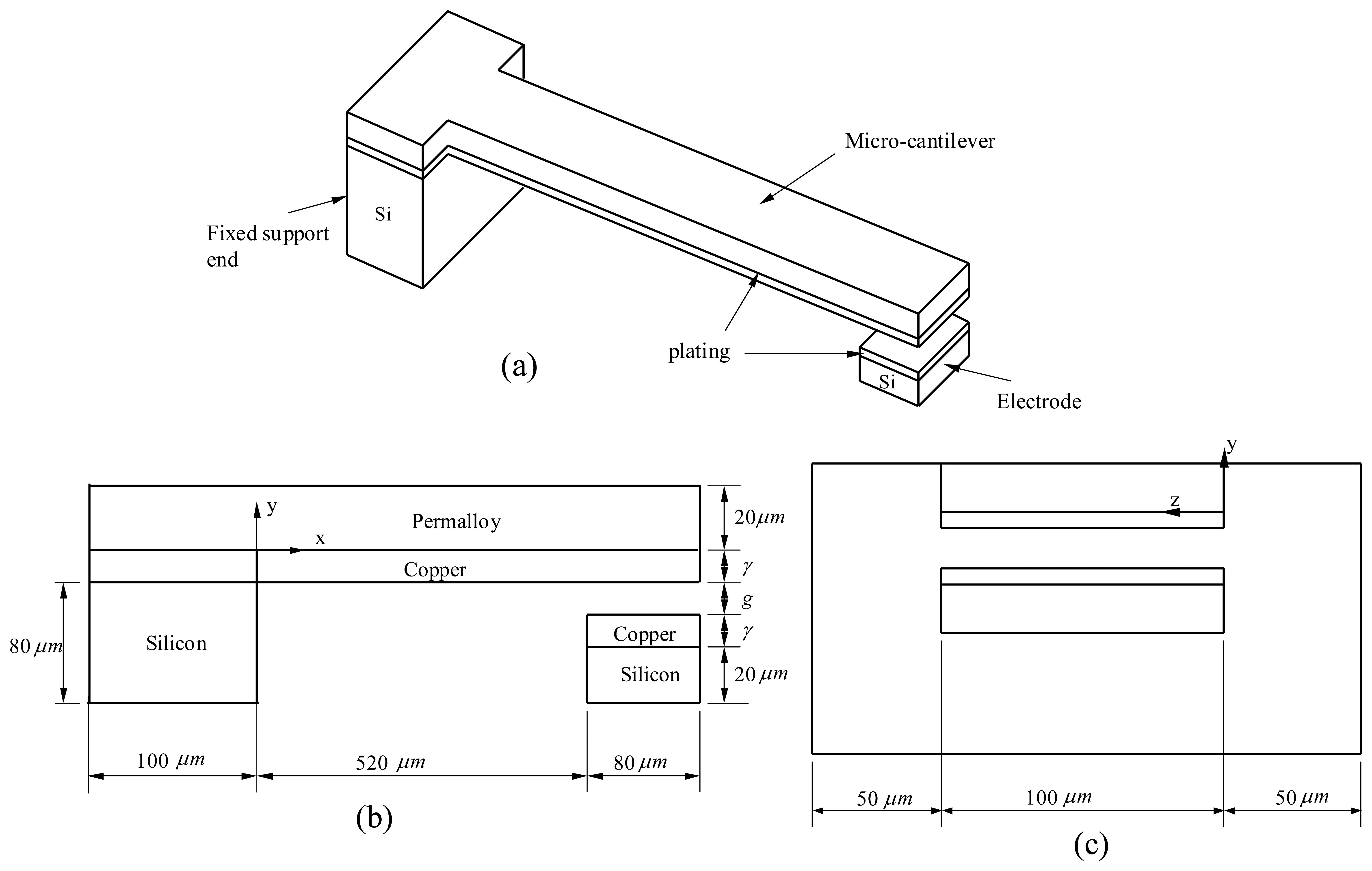
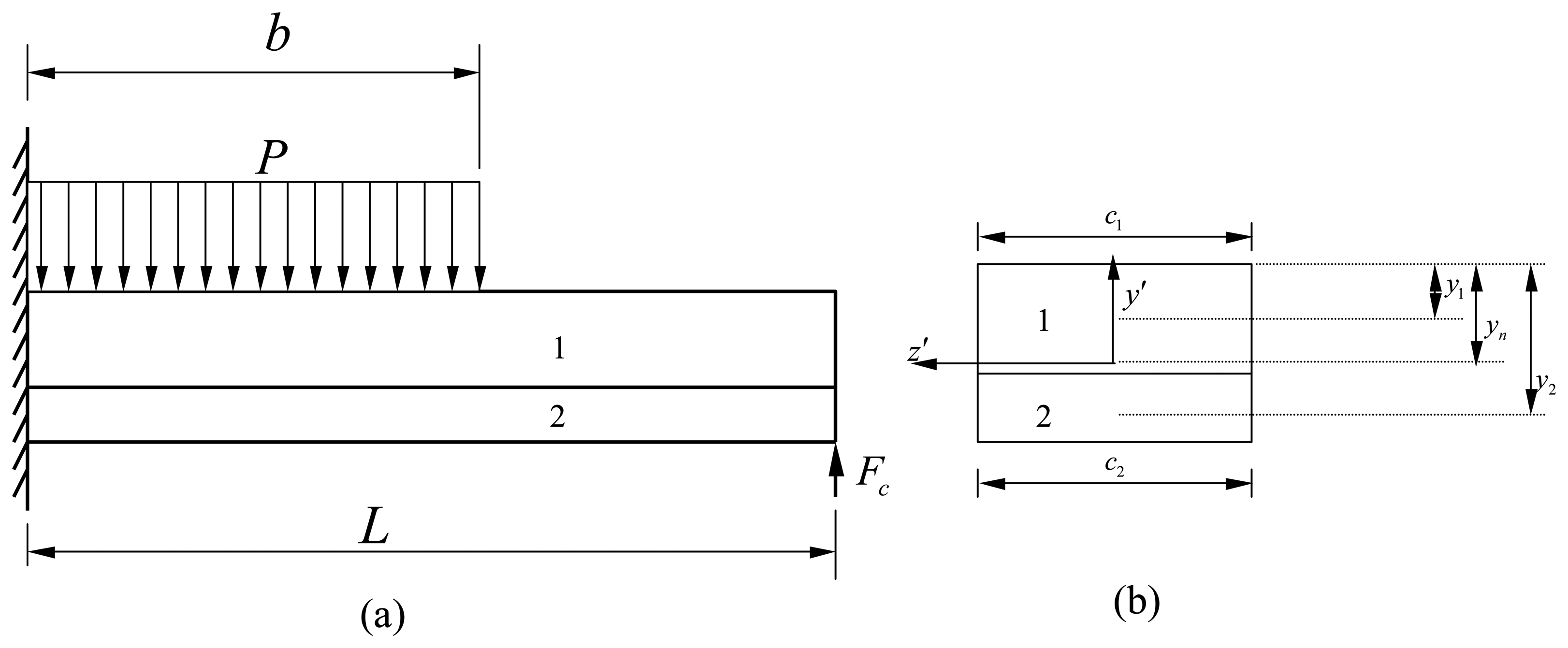
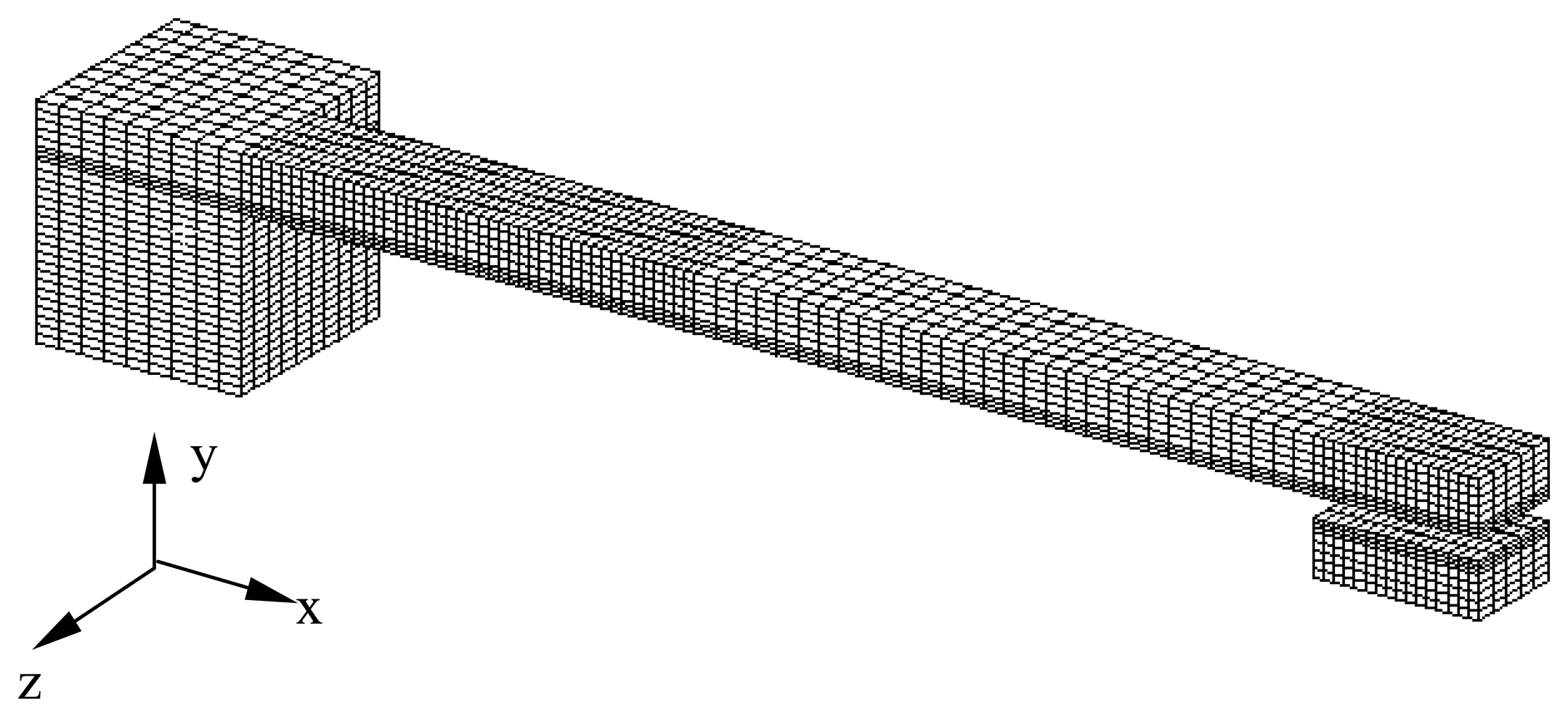
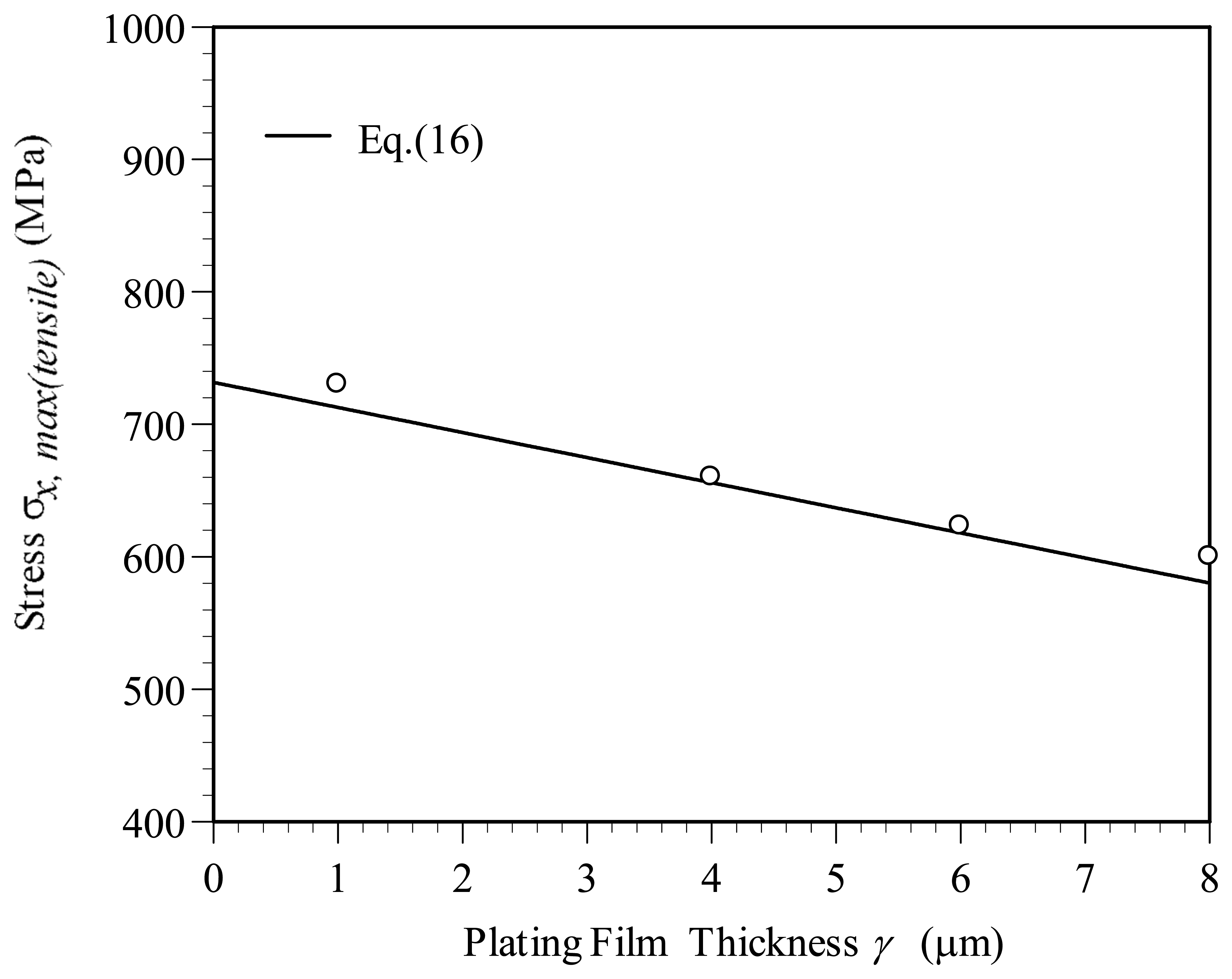
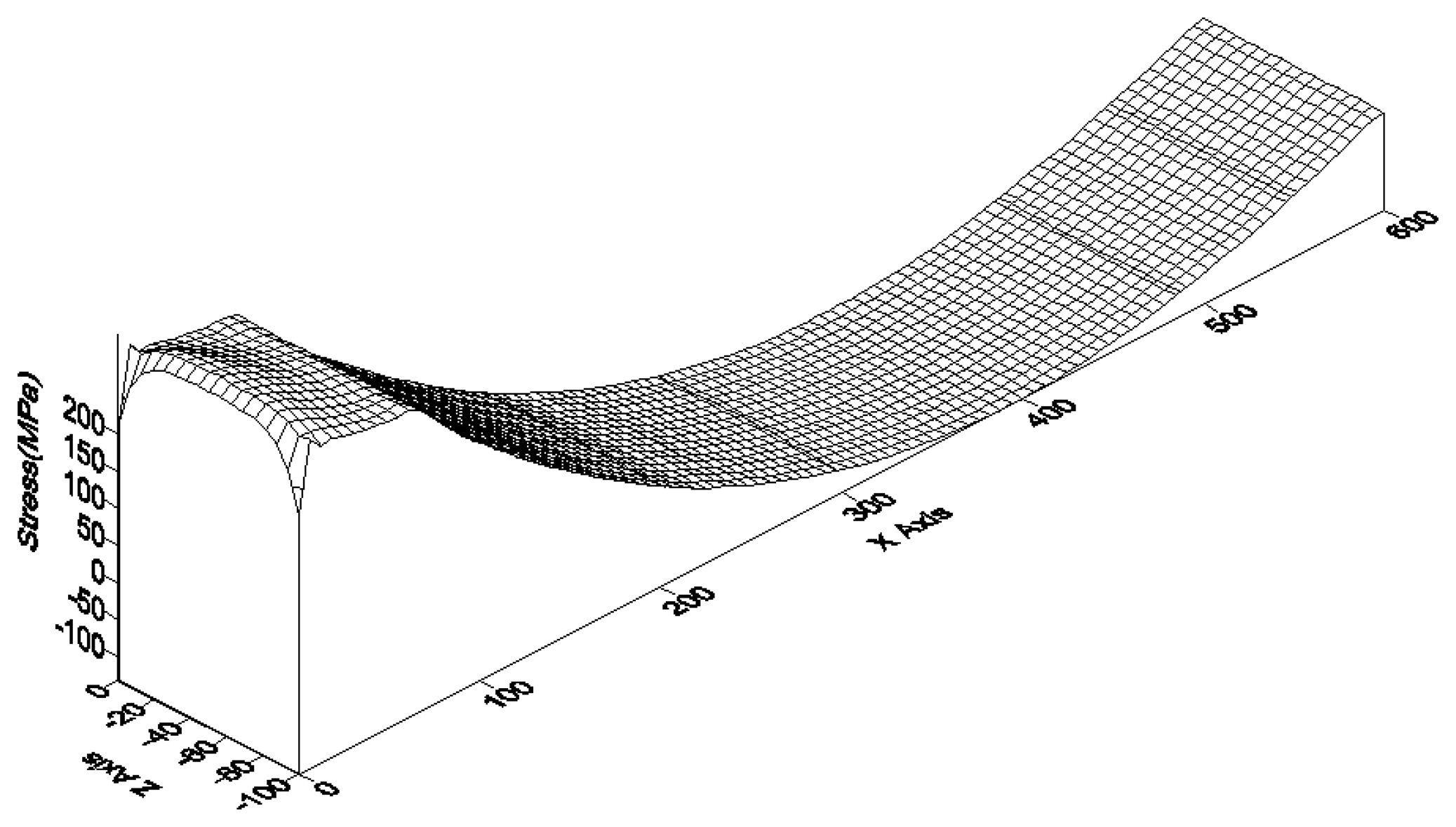
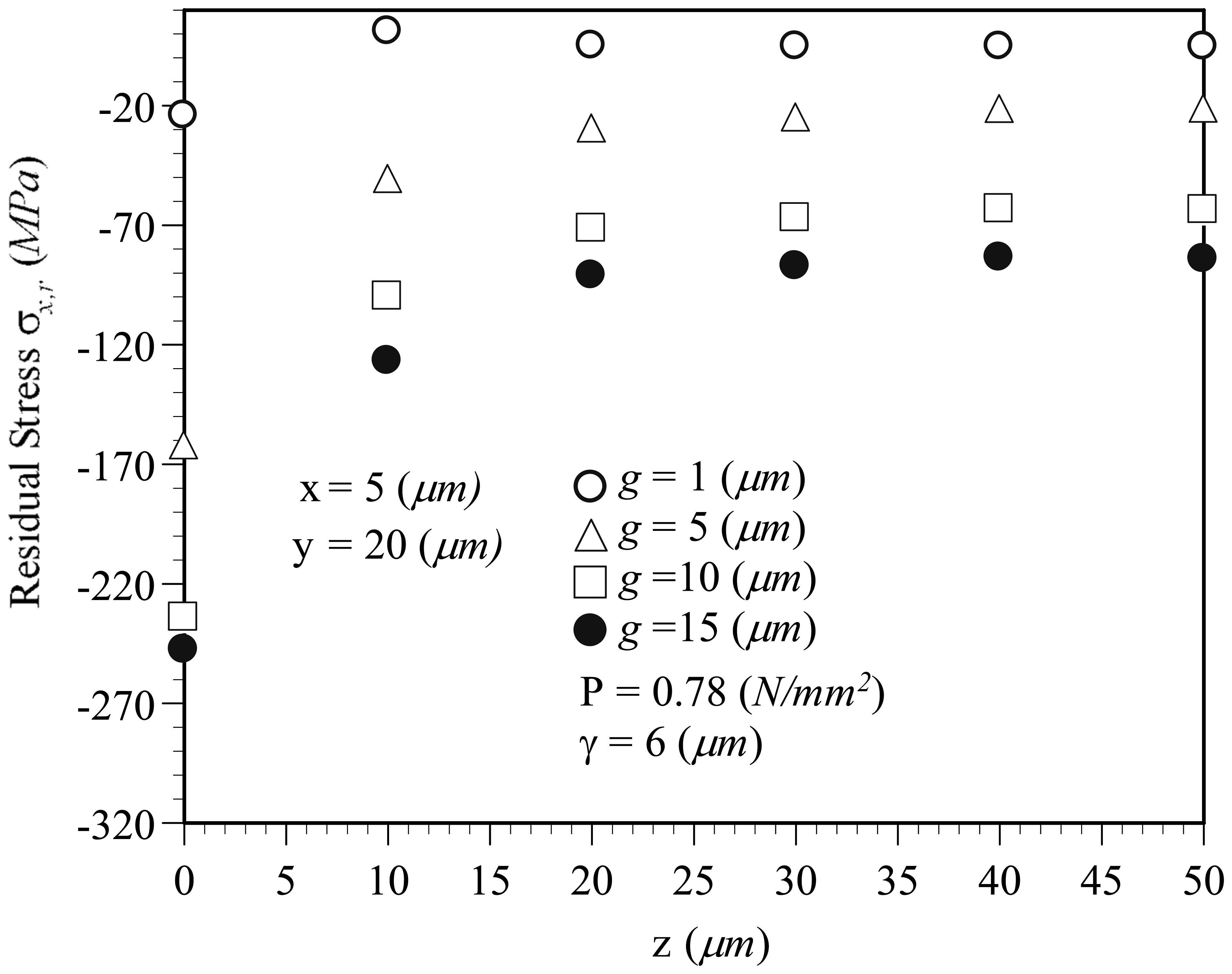

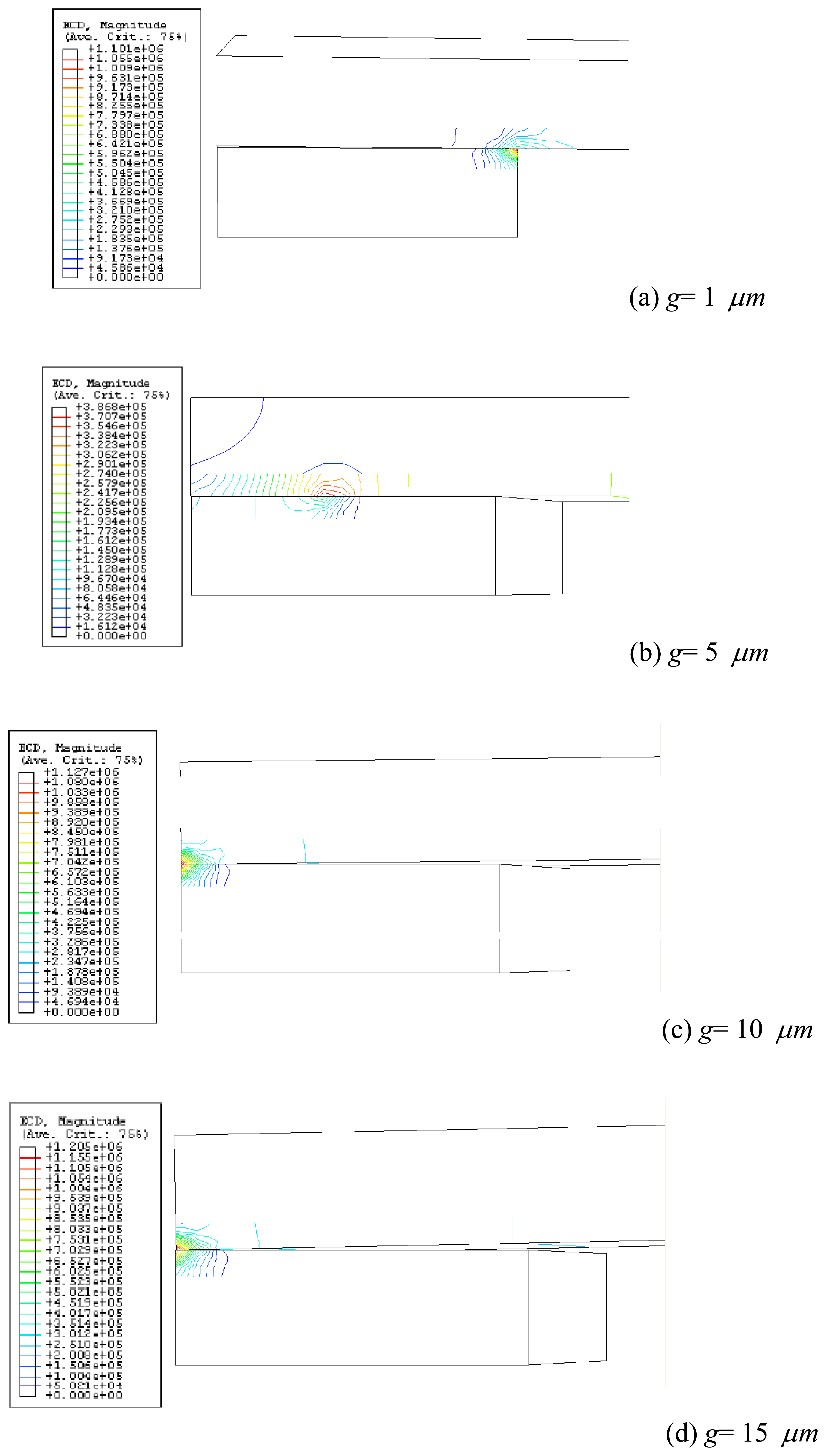
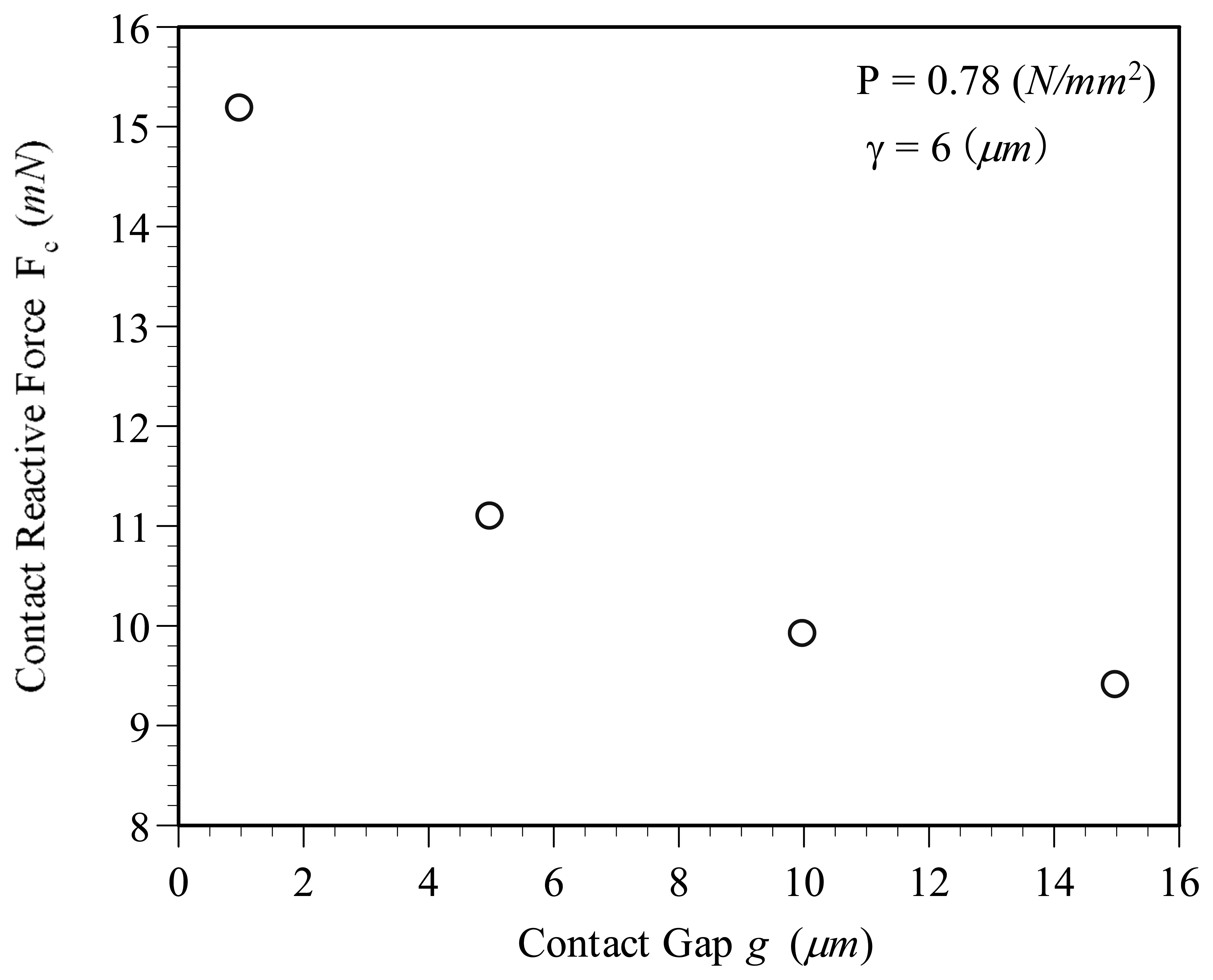
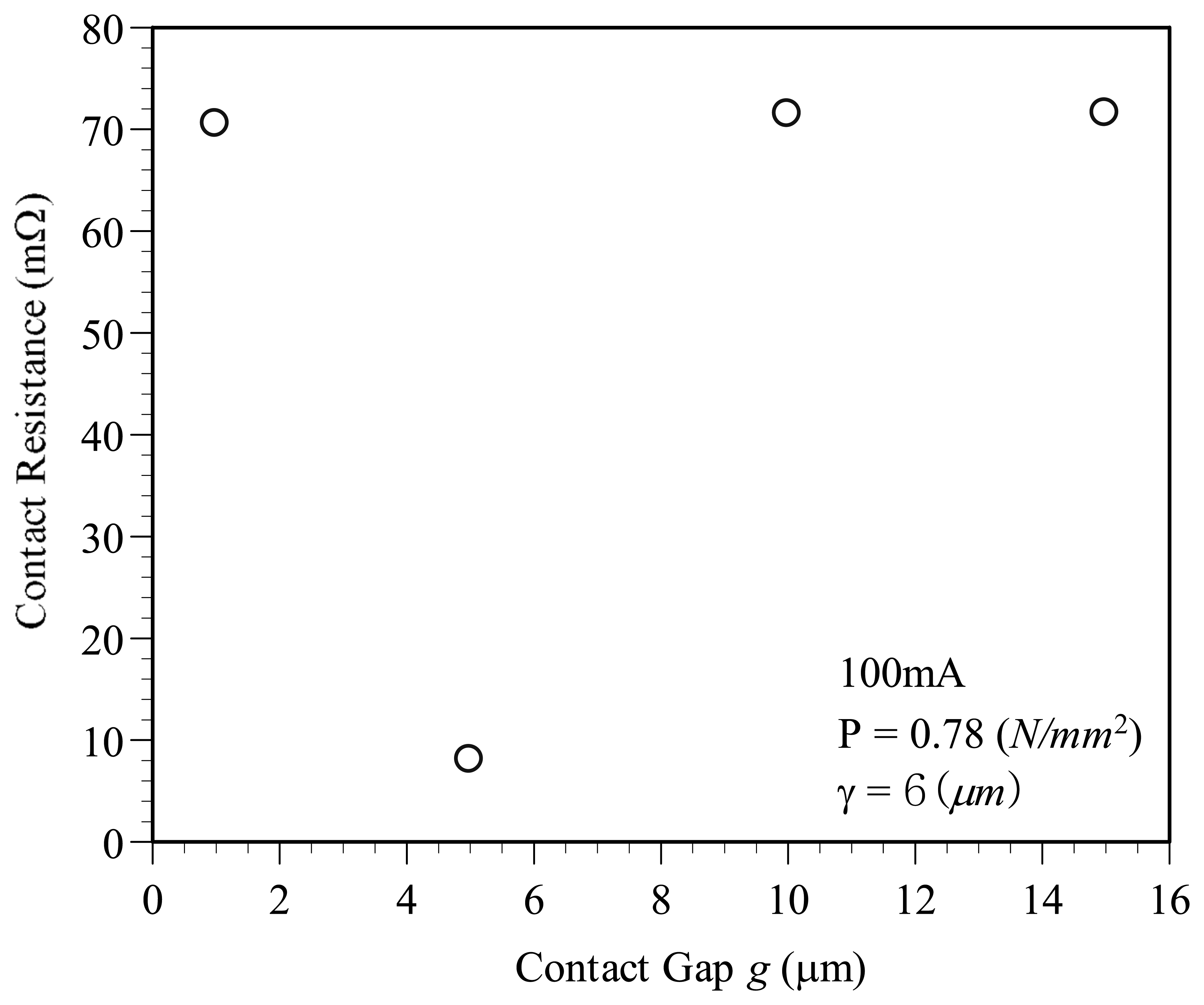
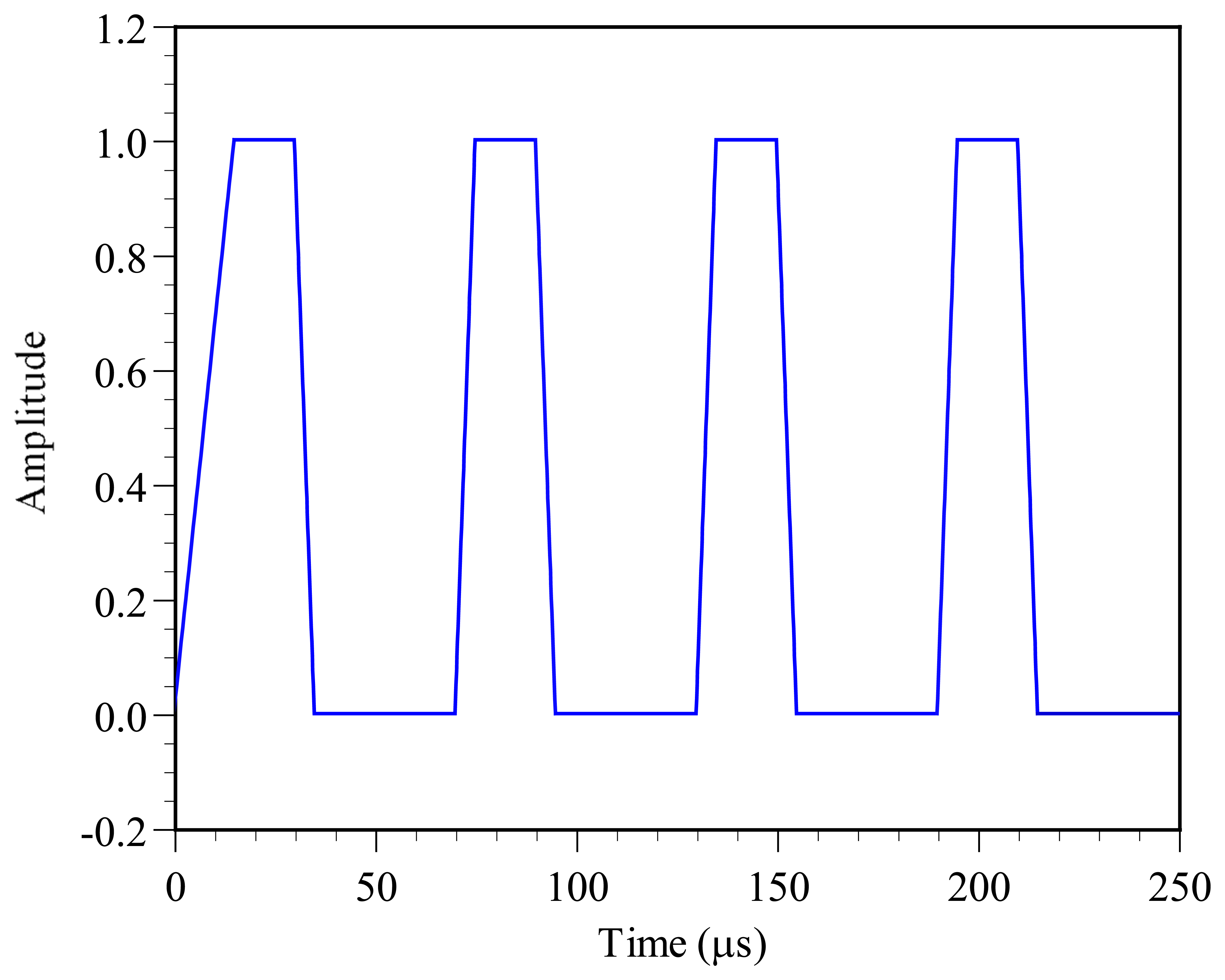
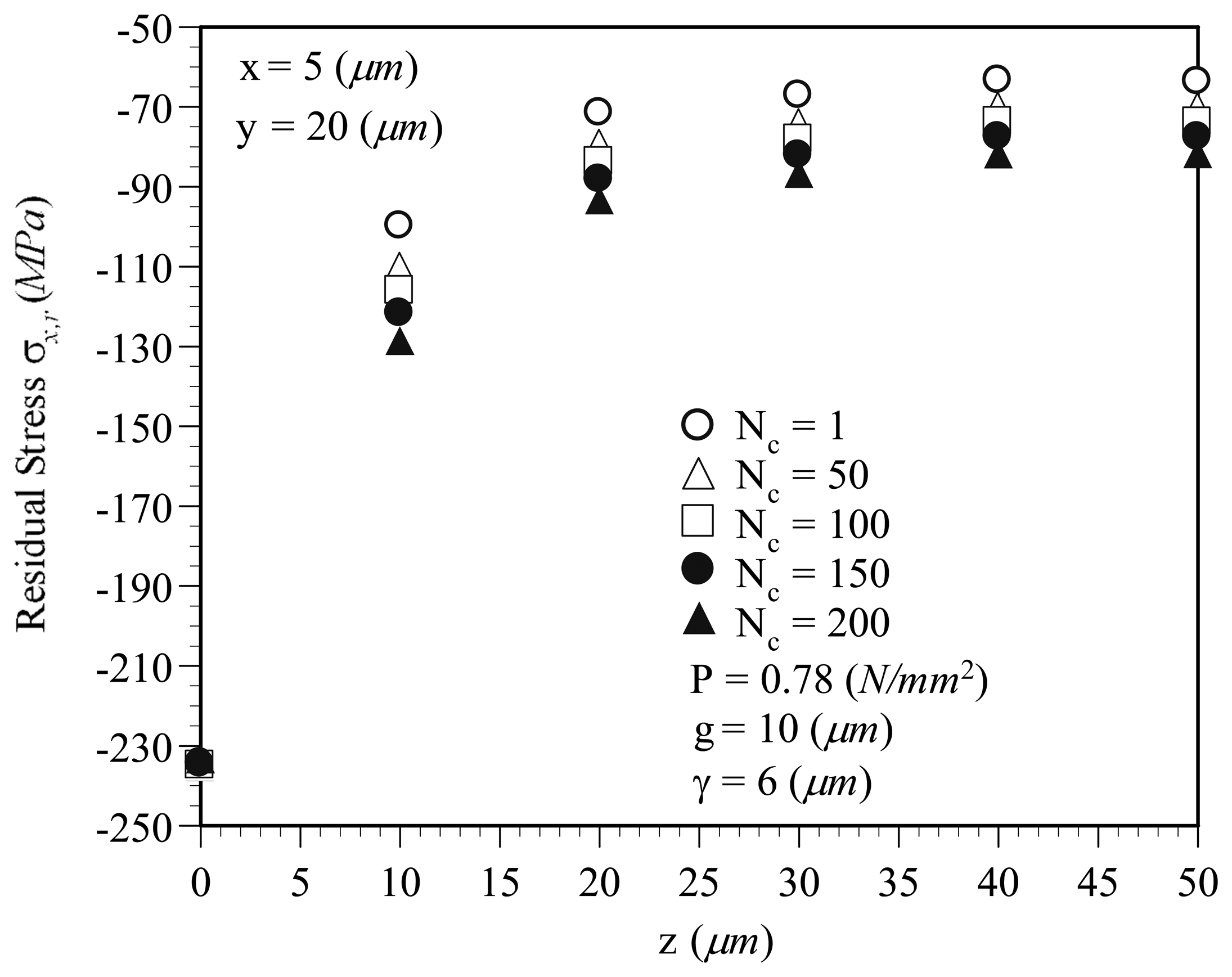
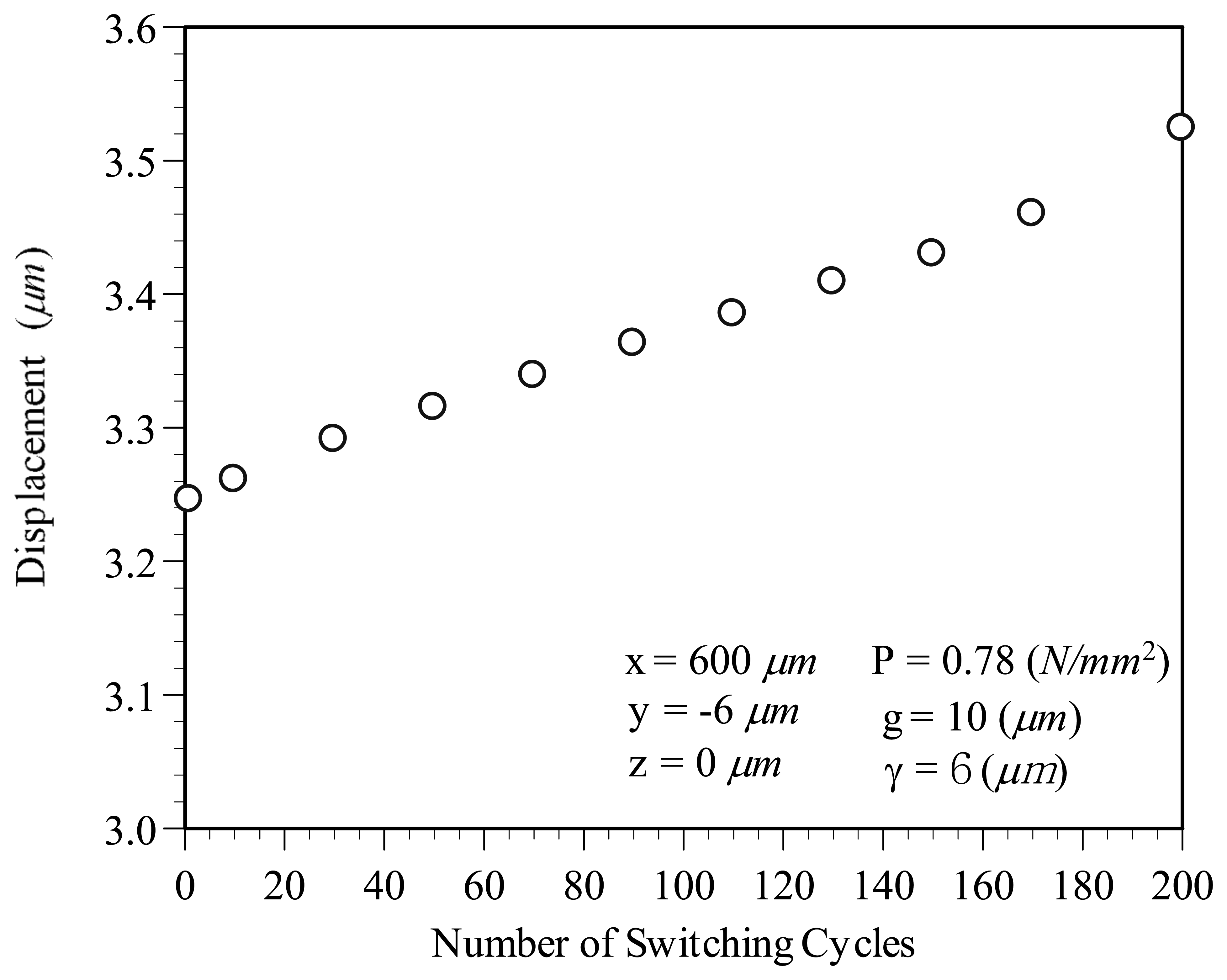
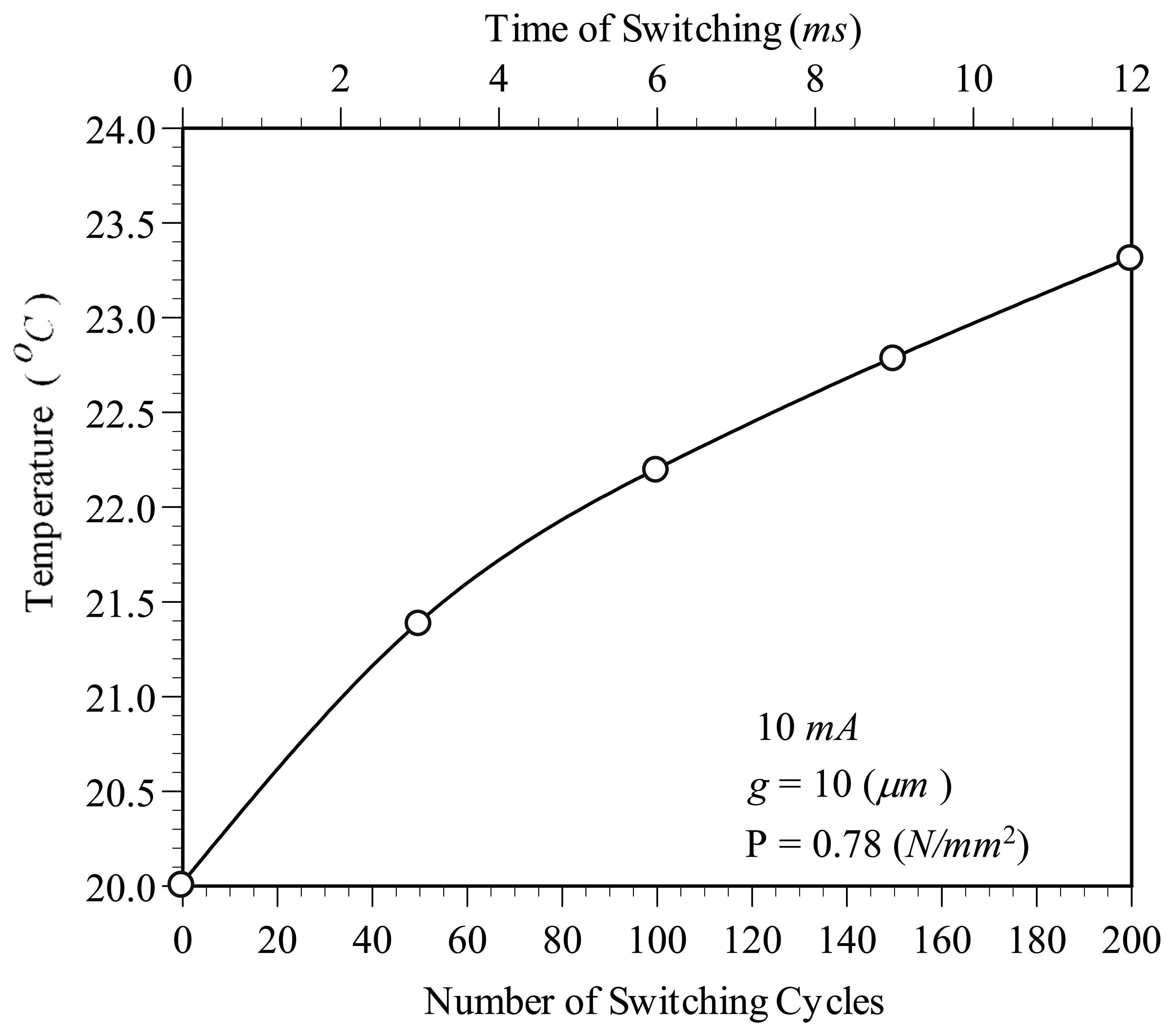
| Permalloy | Copper | Silicon | |
|---|---|---|---|
| Young's modulus (GPa) | 255 | 120 | 73 |
| Poission's ratio | 0.3 | 0.35 | 0.26 |
| Yielding strength (MPa) | 280 [8] | 127 | – |
| Ultimate strength (MPa) | 568 [8] | 435 | 180 |
| Coefficient of Expansion (°C)−1 | 13.347 E-6 | 16.483 E-6 | 3.0 E-6 |
| Conductivity (W / m·K) | 49.99 | 386.52 | 71 |
| Conductance (1 / Ω·m) | 6.249 E+6 | 58.06 E+6 | 60 E+6 |
| Density (kg / m3) | 9200 | 8935 | 3100 |
| Specific Heat (J / kg·K) | 419.99 | 383.62 | 710 |
© 2007 by MDPI ( http://www.mdpi.org). Reproduction is permitted for noncommercial purposes.
Share and Cite
Chen, Y.-C.; Tsai, H.-H.; Lu, W.-H.; Chen, L.-W. Effect of Electrical Contact on the Contact Residual Stress of a Microrelay Switch. Sensors 2007, 7, 2997-3011. https://doi.org/10.3390/s7112997
Chen Y-C, Tsai H-H, Lu W-H, Chen L-W. Effect of Electrical Contact on the Contact Residual Stress of a Microrelay Switch. Sensors. 2007; 7(11):2997-3011. https://doi.org/10.3390/s7112997
Chicago/Turabian StyleChen, Yung-Chuan, Hsun-Heng Tsai, Wei-Hua Lu, and Li-Wen Chen. 2007. "Effect of Electrical Contact on the Contact Residual Stress of a Microrelay Switch" Sensors 7, no. 11: 2997-3011. https://doi.org/10.3390/s7112997




